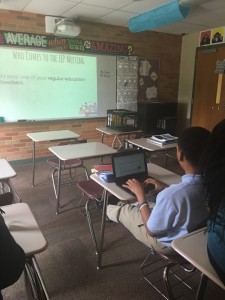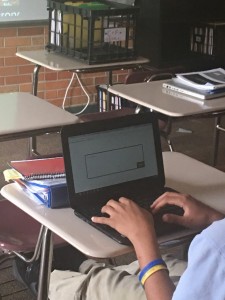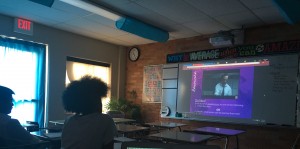Welcome to Room 111
Oh, well, he-LLO again! So nice of you to stop by again! Come on over and sit–let’s chat.
Just to fill you in on what we’ve been doing in our high school Resource class, I’d like to squeeze 2 months-worth of activities in one post. So, just a reminder, I am currently in a 1:1, at-risk high school. I have 4 different Resource classes this year: my freshmen class (which is currently PACKED with 13 students!), my originally-intended-for-sophomore Resource, which now has 4 freshmen, my Certificate of Completion class for those students who are significantly below grade level, and my junior/senior Resource class. Luckily, this year I am co-teaching my freshmen Resource with the other Resource teacher in my building. This helps tremendously with monitoring students, managing the work load, and classroom management.
Because we are a 1:1, I have the ability to help create lessons that utilize the technology our students have. My goal has always been creating lessons that are engaging and informative. Being that we are on a block schedule, it can be challenging to find activities that are engaging enough to have students work for the entire 90 minute period. This year, to help with this, us special ed teachers decided to use stations. This will allow students to work on an activity for 15 minutes before moving on to the next. We find that this minimizes behaviors while keeping students working on skills that we’ve taught them.
One of my favorite tools that I’ve started using more often is PearDeck. This allows me to share my Google Slide presentation to be displayed on each student’s laptop. Additionally, PearDeck lets students use the interactive tools to respond to given prompts. Students can respond with text, draggables, drawing tools, and with multiple choice options. For example, below students are learning about their IEPs (Individualized Education Programs) and enter information on their own slides, that will transfer over to the teacher.
Additionally, we use Google Classroom to post Slides that each student can obtain their own copy of and edit as needed. This has been a huge help in getting activities out to students quickly while being able to check their work just as efficiently. In one of their station activities below, we had students replace “dead words” (overused words, but more Halloween-themed) with more colorful synonyms. With the help of a small set of thesauruses that I’ve hoarded over the past few years, students were able to edit their given slides. Hopefully, this will allow them to know not only that there are so many more words to use than the usual ones, but also where to find them. And thanks to this Google Classroom feature, I can check their work in real-time. Super convenient!
Another thing we do from time to time is give video prompts as their bellringers. At our school, we use Teach Like a Champion strategies and the Do Now strategy is the one that students complete immediately upon class starting. While we try to incorporate a lot of writing in the Do Nows, we try to look for prompts that will be of interest to our students. Having short video prompts will pique their interest and give them that little extra push to want to respond. One example of us using this in our Resource classes was showing them this video and having students respond to it. They could answer a variety of questions, such as, “What happened next? What lesson can be learned from this?” I’ve noticed it’s a lot easier to get longer responses with video prompts than it is with written ones.
We also know that sometimes there’s nothing wrong with good ole’ technology-less activities as well. Getting students up and out of their seats (and just moving) can break the everyday-class-routine monotony. Here you can see students (it was “Where’s Waldo Day,” fyi. Hence, Waldo) in the halls at different checkpoints. These checkpoints had math problems student had to solve and had to select the correct answer from the given choices. This activity in particular reinforced their skills on the distributive property. Once they solved the problem, they were directed to the next clue, which was at another checkpoint in the building. Although this station activity was meant to be completed individually, several students utilized teamwork to solve the problems. Some did them in teams of 2 or 3, others completed them solo. Either way, each student was able to practice their math skills while getting their fidgety-ness out.
So that’s just a snippet of what we’ve been up to so far this year. I am excited to share all of the upcoming treats that will take place in my Resource classes this year with you all. It is still very much a learning process for me, despite this being my 8th year of teaching. Here’s to a successful, new, and tech-filled school year! Salud!





